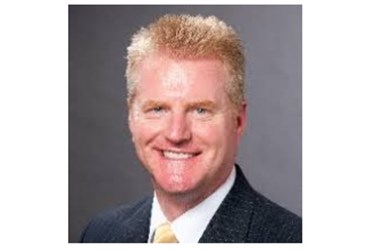Controversy: Alive And Well At Bio International

By Rob Wright, Chief Editor, Life Science Leader
Follow Me On Twitter @RfwrightLSL

By Rob Wright
The 2011 Bio International Convention took place at the Walter E. Washington Convention Center in Washington D.C. This was my first time attending this show, and I have to say it is huge. Bigger doesn’t always mean better, but in this case it does. If you are looking for a show which offers the opportunity to truly interact with colleagues in an international forum, then this is the show. Unlike other conventions, Bio has more than just the standard vendor and sponsor booths; it has state, province, and countries exhibiting about the initiatives they are implementing to attract life science business to their areas. The show’s diversity of topics is also top shelf. Speaking of diversity...
Clinical Trial Diversity Still Sits At The Back Of The Bus
The first session I had the opportunity to attend was the Diversity in Biotechnology Summit. The focus of this session was to expose the inequities which continue in drug development. I would love to report that the session was a packed house, but unfortunately, this was not the case. Perhaps this was because it was held offsite at the Marriott Renaissance hotel, a block away from the main event. I thoroughly enjoyed the panel discussion on the importance of recruiting diversity in clinical trials as being a critical component of personalized medicine. Dr. Freda Lewis-Hall, M.D. chief medical officer, Pfizer (NYSE: PFE); Vivian Pinn, M.D., NIH’s director of the office of research on women’s health; Gary Puckrein, Ph.D., president and CEO of the National Minority Quality Forum; and Elena Rios, M.D., president and CEO of the National Hispanic Medical Association discussed the knowledge gained on how common medicines, such as morphine and insulin, can have different responses depending upon one’s gender, race or ethnicity. Yet, clinical trials continue to under represent various races and ethnicity —- even for drugs developed and indicated for diseases known to be prevalent in a specific race. Why? According to keynote speaker August White III, M.D., professor of orthopedic surgery at Harvard Medical School, certain groups continue to receive disparate care in the United States. White listed 13 groups, including African Americans, Appalachian whites, gays, obese, and transgender patients. I was not surprised to be told that racism and discrimination still exist in our society. What was surprising was White’s explanation of how subconscious stereotyping influences doctor-patient interactions, diagnoses, and treatments. Research has shown there to be no statistically significant difference in a patient’s willingness to participate in clinical trials when it comes to race, ethnicity, or gender. Want to improve diversity in clinical trials? Start by healing thyself in the patient recruitment process.
Biotechnology Industry Report Panel Discusion Raises Blood Pressure
Ernst & Young (E&Y) and G. Steven Burrill conducted state of the biotechnology industry reports. I attended E&Y’s. Gautam Jaggi, senior manager, editor, and apparent speed talker with E&Y, provided a recap of what is taking place in the industry, presenting two imperatives necessary to sustain innovation: (1) Do more with less; and (2) Prove it or lose it. What do these mean? There is less funding for drug discovery, and the key to receiving and maintaining said funding is to quickly demonstrate proof of concept. Call me cynical, but I hardly found this to be an “Ah-Ha” moment. What was one of those moments occurred during the subsequent panel discussion. I especially enjoyed the interaction and raised blood pressure levels which occurred between Paul Hastings, president and CEO of OncoMed Pharmaceuticals and Chris Viehbacher, CEO of Sanofi (SAN; FP). These two leaders and companies reside at opposite ends of the spectrum in both size and approach. OncoMed is a small, privately held, U.S. company, while France-based Sanofi is one of the largest publically traded pharmaceutical companies in the world. Hastings pointed out the difference between U.S. and EU regulatory agencies, complimenting the EMA for including innovation in its mission statement, while current processes in place at the FDA are creating regulatory uncertainty. Viehbacher stated the industry cannot get too caught up in focusing on regulatory issues and went on to use a hockey analogy to describe his approach to drug discovery. This resulted in Hasting dropping the gloves —- publicly stating how Viehbacher’s preceding comments were beneficial in successfully raising his blood pressure. Hasting’s went on to comment on the importance of disruptive innovation to new drug discovery, while Viehbacher provided an insightful, and what I would describe as apathetic, summation: “Sometimes you need to take the world as it is, not how you would like it to be,” he said. I have heard executives from big pharma claim to want innovation, but it sound like small pharma and small biotech are the companies talking the talk and walking the walk.
